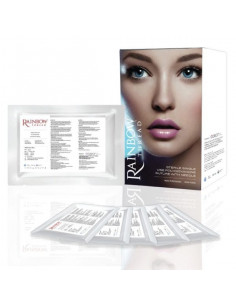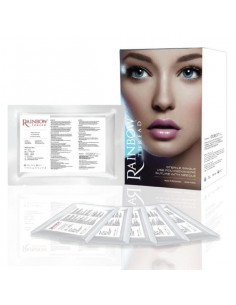Threadlifting

100265
» They are largely effective in facial tightening and wrinkle removal by self-stimulation of cells.
» There is no interruption in daily life, even immediately after the procedure.
» In addition, there are no side effects or worries about the removal surgery because it is completely dissolved into the body after 1 ~ 2 years.
» It is biodegradable,...
immediately available
€59.00
RAINBOW THREAD PDO SCREW | 27G/60/100 | PU 20pcs.
100267
» PDO spiral threads are recommended for volume restoration.
» Due to its spiral shape wrapped around the needle, the thread has a better regenerative effect than PDO monofilaments.
» The thread is flexible and elastic, which is especially important when correcting areas of high mimicry activity.
RAINBOW THREAD PDO SCREW | 27G/60/100
immediately available
€85.00
Rainbow thread 6D cog PDO threads with needles
100106
6d Cog/6d serrated sutures have 360 degree spirals that run every 60 degrees around the entire circumference.
This is considered the optimal degree to achieve the best anchorage in the superficial muscular aponeurotic layer of the face. 6d Cog/6d serrated threads can restore expression lines, nasolabial folds and sagging skin. They also accelerate blood...
immediately available
€498.61
RAINBOW THREAD PDO MONO | 30G/25/30 | PU 20pcs.
100268
The results obtained with Rainbow Thread PDO Mono 30G/25/30 are immediately visible and produce a visible tightening and lifting effect.
RAINBOW THREAD PDO MONO | 30G/25/30
immediately available
€61.00
RAINBOW THREAD COG ULTRA+ 25G/60/185
100256
With a 360° spiral design, Rainbow Cogs lock and hold skin tissues in multiple directions for a long-lasting effect.
- Rainbow Cog has 360° spiral tines on the thread for effective and consistent anchoring.
- 360° (3D Cog) can fix tissue in all directions and is secure as it uses a strong thread with a 360° curvature.
RAINBOW THREAD COG 3D 21G/90L/150
immediately available
From
€403.99
RAINBOW THREAD HEART LIFT. COG | 18G/100/185
100259
Heart Lifting is an innovative notched yarn made using a casting technique.
Unlike toothed types of threads, the notches are not damaged by the casting method, because the thread is made by pressing it in the mold.
This technology extends the biodegradation period, which provides a longer lasting effect.
The unique design of the heart-shaped incisions...
immediately available
€499.00
The Thread Lift is the most effective lifting program for skin rejuvenation. Thread lift is used on the face, neck, décolleté area and body.












